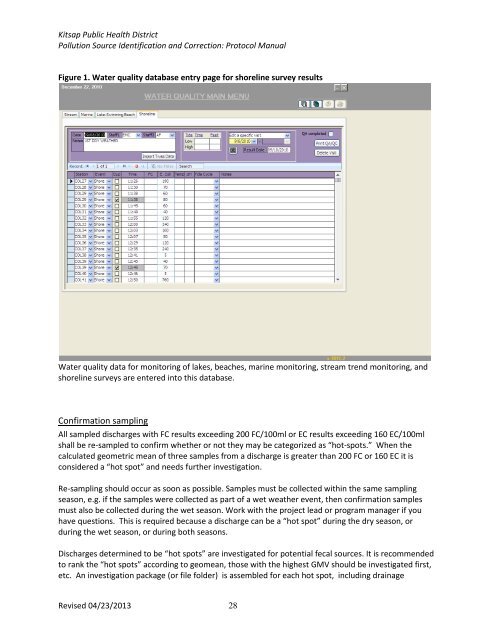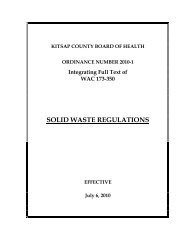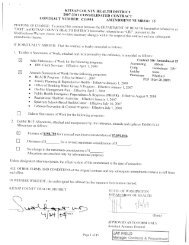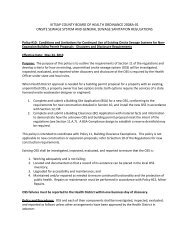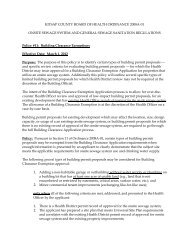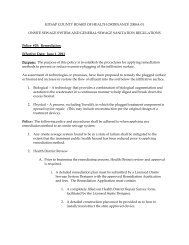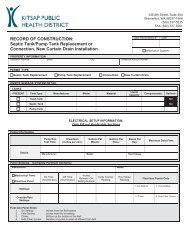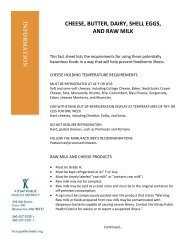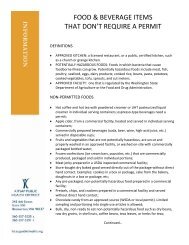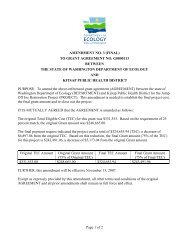(PIC) Protocol Manual - Kitsap Public Health District
(PIC) Protocol Manual - Kitsap Public Health District
(PIC) Protocol Manual - Kitsap Public Health District
You also want an ePaper? Increase the reach of your titles
YUMPU automatically turns print PDFs into web optimized ePapers that Google loves.
<strong>Kitsap</strong> <strong>Public</strong> <strong>Health</strong> <strong>District</strong><br />
Pollution Source Identification and Correction: <strong>Protocol</strong> <strong>Manual</strong><br />
Figure 1. Water quality database entry page for shoreline survey results<br />
Water quality data for monitoring of lakes, beaches, marine monitoring, stream trend monitoring, and<br />
shoreline surveys are entered into this database.<br />
Confirmation sampling<br />
All sampled discharges with FC results exceeding 200 FC/100ml or EC results exceeding 160 EC/100ml<br />
shall be re-sampled to confirm whether or not they may be categorized as “hot-spots.” When the<br />
calculated geometric mean of three samples from a discharge is greater than 200 FC or 160 EC it is<br />
considered a “hot spot” and needs further investigation.<br />
Re-sampling should occur as soon as possible. Samples must be collected within the same sampling<br />
season, e.g. if the samples were collected as part of a wet weather event, then confirmation samples<br />
must also be collected during the wet season. Work with the project lead or program manager if you<br />
have questions. This is required because a discharge can be a “hot spot” during the dry season, or<br />
during the wet season, or during both seasons.<br />
Discharges determined to be “hot spots” are investigated for potential fecal sources. It is recommended<br />
to rank the “hot spots” according to geomean, those with the highest GMV should be investigated first,<br />
etc. An investigation package (or file folder) is assembled for each hot spot, including drainage<br />
Revised 04/23/2013 28


